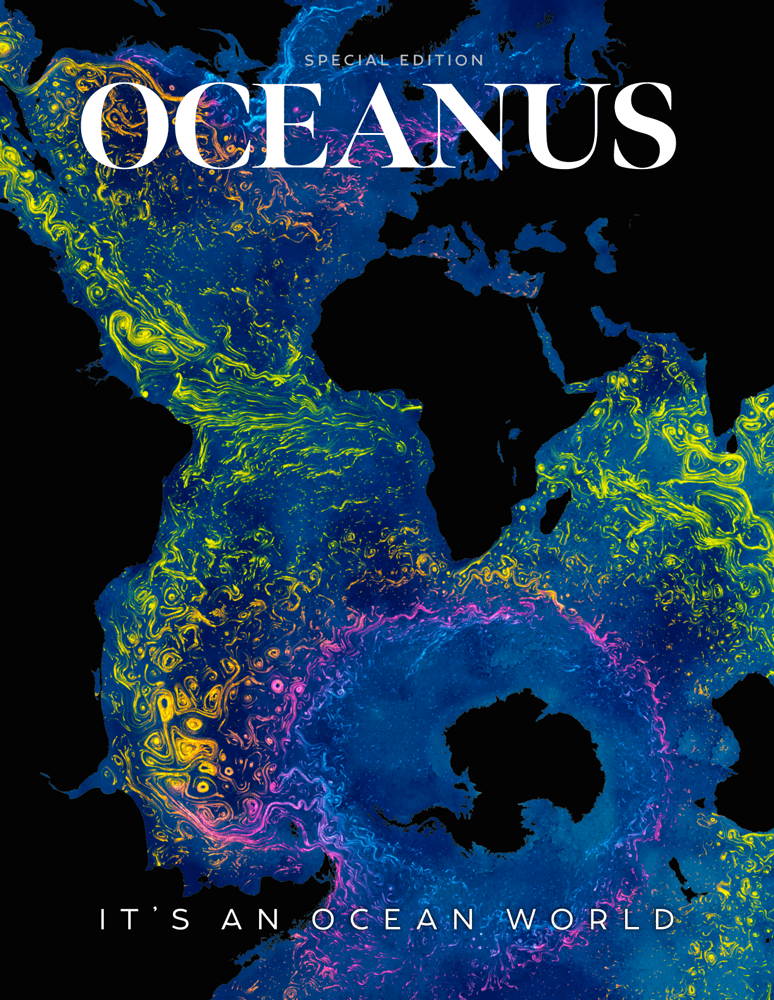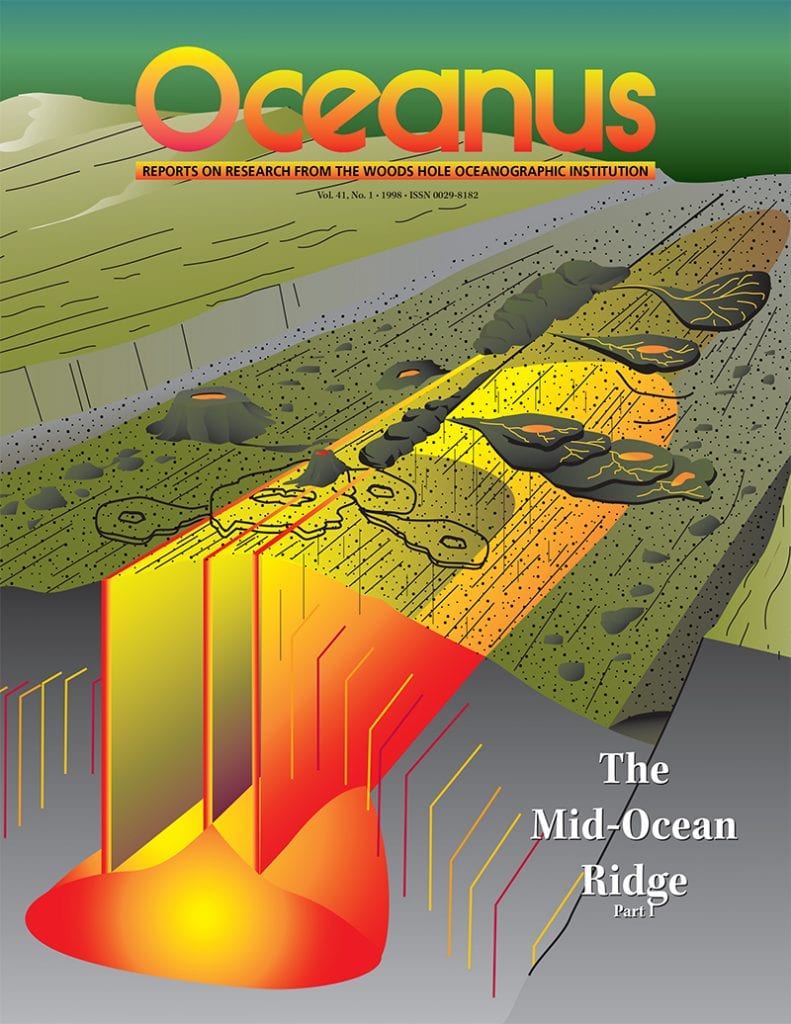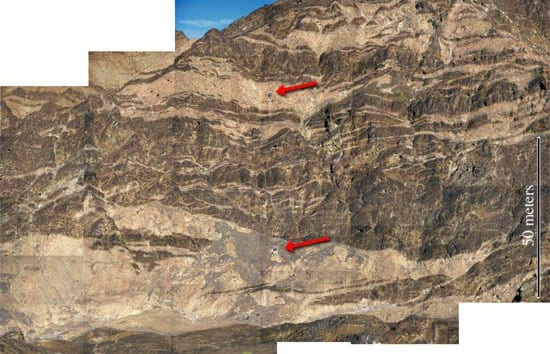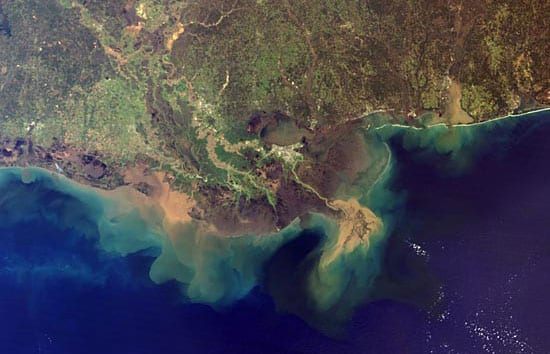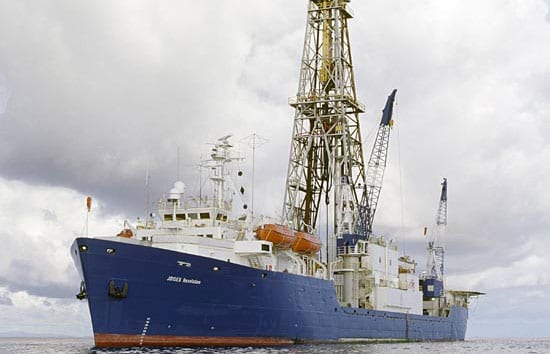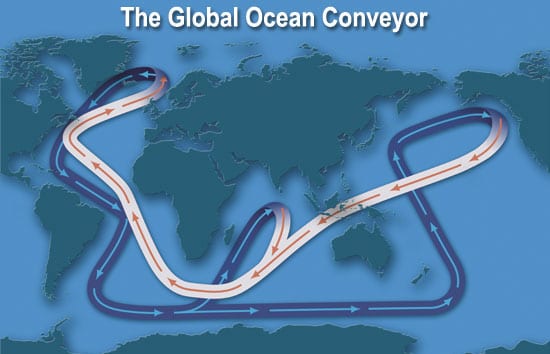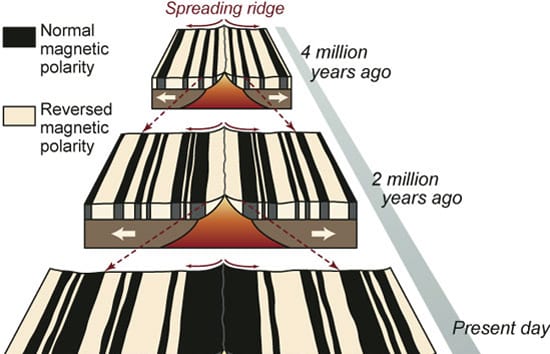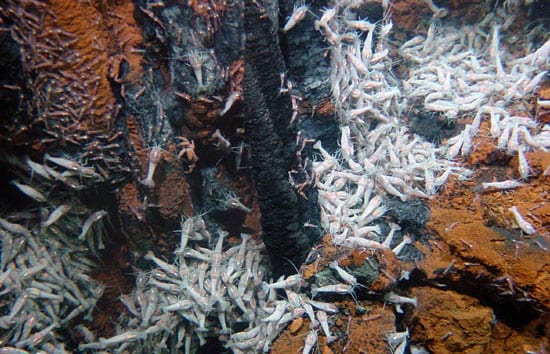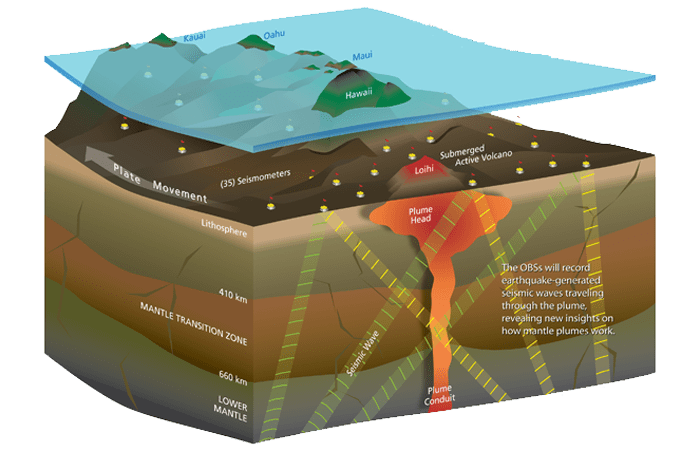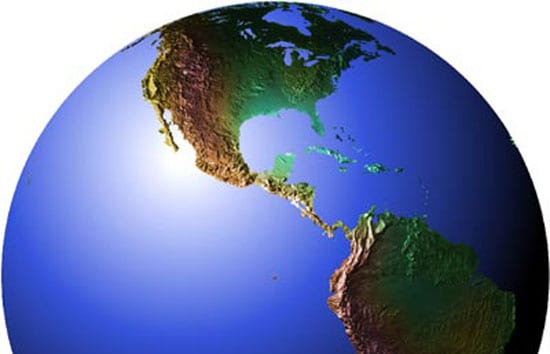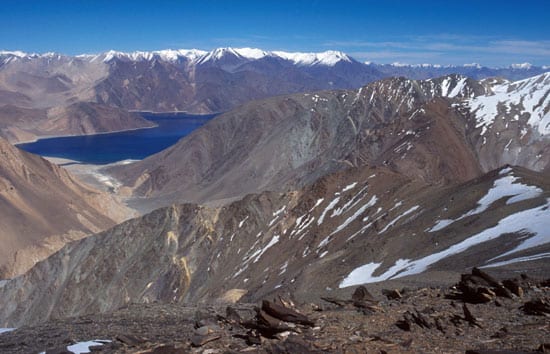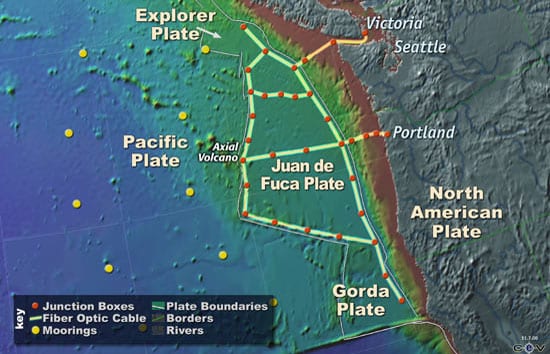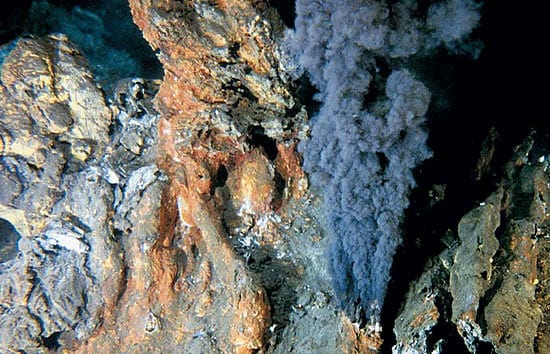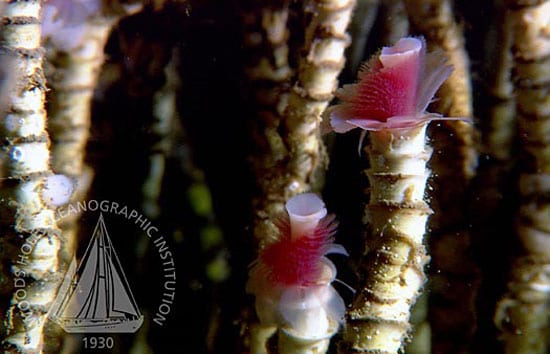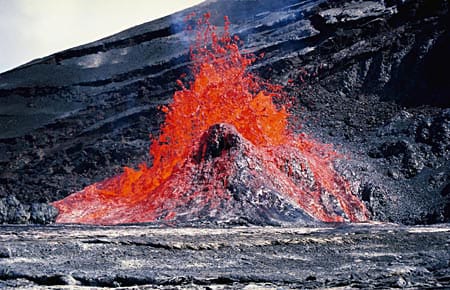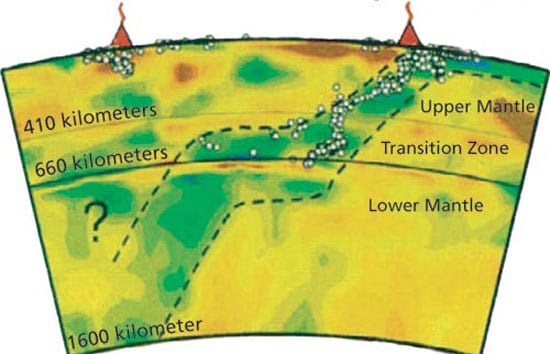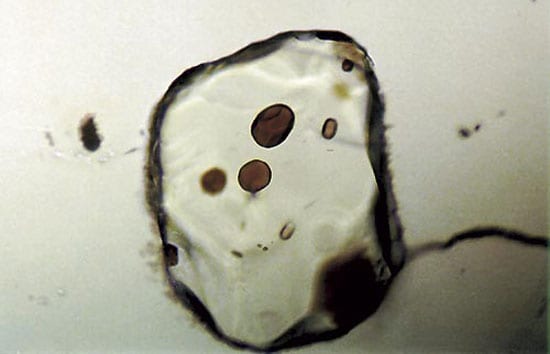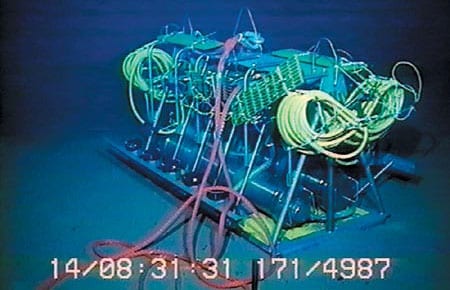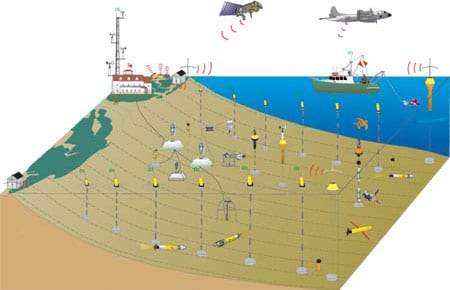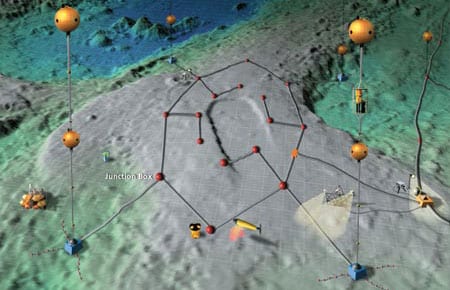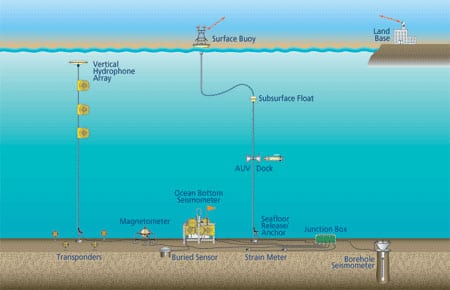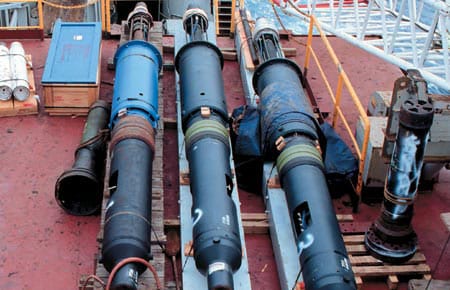Oceanus Online Archive
Is Life Thriving Deep Beneath the Seafloor?
In 1991, scientists aboard the submersible Alvin were in the right spot at the right time to witness something extraordinary. They had sailed into the aftermath of a very recent volcanic eruption on the seafloor and found themselves in a virtual blizzard. They were densely surrounded by flocs of white debris, composed of sulfur and microbes, which drifted more than 30 meters above the ocean bottom. The seafloor was coated with a 10-centimeter-thick layer of the same white material. This vast volume of microbes did not come from the ocean. The eruption had flushed it out from beneath the seafloor.
Read MoreUnraveling the Tapestry of Ocean Crust
Most people know that oceans cover about 70 percent of Earth’s surface. Fewer people realize that the crust beneath oceans and continents is fundamentally different. Why this is so remains a mystery that scientists are still trying to solve.
Read MoreThe Grass is Greener in the Coastal Ocean
Stretching from inland rivers and bays to the edge of the continental shelf, the coastal ocean accounts for about 10 percent of the ocean’s surface area. Yet this relatively small sliver of ocean contains about half of all the microscopic plants adrift in our seas.
A Sea Change in Ocean Drilling
Stretching from inland rivers and bays to the edge of the continental shelf, the coastal ocean accounts for about 10 percent of the ocean’s surface area. Yet this relatively small sliver of ocean contains about half of all the microscopic plants adrift in our seas.
Read MoreHow the Isthmus of Panama Put Ice in the Arctic
The long lag time has always puzzled scientists: Why did Antarctica become covered by massive ice sheets 34 million years ago, while the Arctic Ocean acquired its ice cap only about 3 million year ago?
Read MorePaving the SeafloorBrick by Brick
Most of Earth’s crust is manufactured at the bottom of the sea. Deep beneath the waves and beyond our view, magma erupts along a 40,000-mile volcanic mountain chain that bisects the ocean floors and encircles the globe. The lava flowing from these mid-ocean ridges solidifies into new ocean crust that spreads out and paves the surface of our planet.
Read MoreThe Evolutionary Puzzle of Seafloor Life
Most of Earth’s crust is manufactured at the bottom of the sea. Deep beneath the waves and beyond our view, magma erupts along a 40,000-mile volcanic mountain chain that bisects the ocean floors and encircles the globe. The lava flowing from these mid-ocean ridges solidifies into new ocean crust that spreads out and paves the surface of our planet.
Read MoreListening Closely to ‘See’ Into the Earth
Today, excitement and anticipation is growing because of new generations of seismographs designed for use in the oceans. These new instruments will comprise a new national pool of instruments for use by the scientific community.
Read MoreShifting Continents and Climates
Sixty-five millions years ago, dinosaurs had just become extinct, and mammals were starting to dominate the planet.
Read MoreMoving Earth and Heaven
The mountains rise, are lashed by wind and weather, and erode. The rivers carry mud and debris from the mountains into the ocean, where they settle onto the relatively tranquil seafloor and are preserved. The sediments bear evidence about where they came from, what happened to them, and when. By analyzing, measuring, and dating these seafloor sediments, scientists can piece together clues to reconstruct when and how fast their mountain sources rose to great heights millions of years ago, and how the climate and other environmental conditions may have changed in response.
Read MoreSeeding the Seafloor with Observatories
Scientists extend their reach into the deep with pioneering undersea cable networks
H2O (Hawaii-2 Observatory) – In 1998, scientists used the remotely operated vehicles (ROV) Jason and Medea to create the pioneering long-term seafloor observatory called H2O (Hawaii-2 Observatory). They spliced an abandoned submarine telephone cable into a termination frame. The frame relays power and communications to a junction box, which serves as an electrical outlet for scientific instruments.
The Remarkable Diversity of Seafloor Vents
Since 1982, I had spent most of my waking hours examining pieces of seafloor vent deposits that had been recovered during a routine dredging operation along the Juan de Fuca Ridge off the Pacific Northwest coast.
Read MoreWhen Seafloor Meets Ocean, the Chemistry Is Amazing
Scientists are discovering that abundant quantities of methane gas are continually seeping from the seafloor throughout the oceans. This widespread but overlooked natural phenomenon has potentially dramatic implications on world energy supplies, life in the oceans, and Earth’s climate.
Read MoreConduits Into Earth’s Inaccessible Interior
Jules Verne wrote about a way to journey to the center of the earth, but unfortunately, we haven’t found it yet. So we really don’t know what happens deep inside our planet.
Read MoreThe Engine that Drives Earth
Poets and philosophers have celebrated the timelessness of the land around us for eons, but the solid Earth is actually a very dynamic body. Great tectonic plates are in constant motion at Earth’s surface.
Read MoreIf Rocks Could Talk…
Every rock on Earth contains a clock, a thermometer, and a barometer.
Read MoreVoyage to Vailulu’u
It was like a pirate’s treasure map. A dotted line clearly showed the trail, but at the end of it, no “X” marked the spot. Then a telltale clue caught…
Read MoreSeeding the Oceans with Observatories
Ship-borne expeditions have been the dominant means of exploring the oceans in the 20th century. Scientists aboard ships made the observations and gathered the data that confirmed the revolutionary theory of plate tectonics, which demonstrated that the earth is a complex, multi-faceted system that changes over time. But that revelation also exposed a major shortcoming of the ship-based exploratory approach: its very limited ability to quantify change.
Read MoreA Well Sampled Ocean
Unlike the oceans, the sky is relatively visible and accessible to us. But in the ocean, the situation is quite different. Conditions and processes at work on any given day in the ocean are usually a mystery to us.
Read MoreNEPTUNE: A Fiber-Optic ‘Telescope’ to Inner Space
NEPTUNE is a proposed system of high-speed fiber- optic submarine cables linking a series of seafloor nodes supporting thousands of assorted measuring instruments, video equipment, and robotic vehicles that could upload power and download data at undersea docks. Unlike conventional telephone cables, which supply power from shore in a straight line, end to end, NEPTUNE would operate like a power grid, distributing power simultaneously and as needed throughout the network. Working much like a campus data network (with nodes analogous to buildings and each instrument like a workstation), NEPTUNE would provide real-time transmission of data and two-way communications.
Read MoreSeafloor to Surface to Satellite to Shore
The next great leap in our understanding of the earth-ocean system will require us to put our “eyes” and “ears” in the ocean to observe the dynamic processes going on there as they are happening, in real time.
Read MorePlugging the Seafloor with CORKs
Hidden beneath the seafloor throughout most of the world’s oceans lies a massive, dynamic plumbing system that is a central component of our planet’s inner workings.
Read MoreOutposts in the Ocean
Oceanographers and climatologists have something in common with politicians and stock market analysts: They are all trying to get a grasp on a complex, ever-shifting system.
Read More